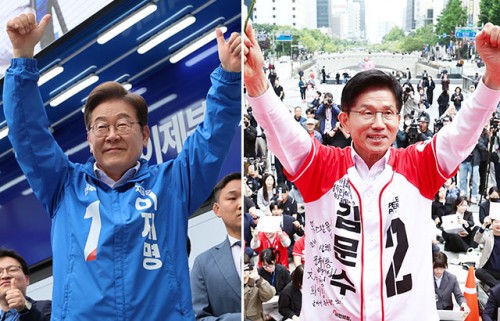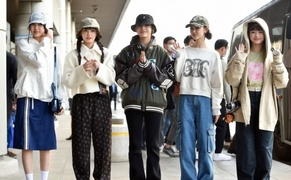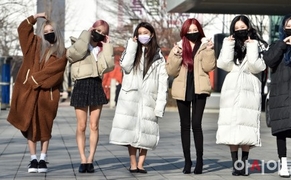 |
With just two weeks remaining until the June 3 presidential election, Democratic Party candidate Lee Jae-myung and ruling People Power Party (PPP) candidate Kim Moon-soo are locked in an increasingly close battle in the Seoul metropolitan area. Both candidates focused their campaigns on the capital region on May 19, seeking to shift the electoral map in their favor by securing the crucial “swing vote” zone.
While Lee continues to lead in national polls, Kim is gaining momentum in Seoul and surrounding areas, narrowing the gap. The two candidates’ efforts signal a strategic pivot toward winning over the capital region, home to the largest voter population in the country.
In previous elections, Seoul and the broader metropolitan area—comprising Seoul, Gyeonggi Province, and Incheon—have often determined the final outcome. In the 2022 presidential election, out of 34,059,714 total voters, 17,151,632, or 50.36%, were based in the capital region.
This starkly contrasts with voter turnout in other regions. Apart from South Gyeongsang Province (2.14 million) and Daegu (2.2 million), most other local governments have fewer than 1 million voters, underscoring the decisive role of the capital area.
Recent polling shows signs of a shift in voter sentiment, particularly in Seoul. A survey conducted by Asia Today and the Korea Public Opinion Reputation Research Institute on May 17, targeting 1,005 adults nationwide, showed Kim narrowly leading Lee in Seoul by 44% to 41%. PPP officials expressed optimism, calling it a sign of “a wind from Seoul spreading nationwide,” while Democratic Party officials acknowledged that “it’s not yet time for complacency or optimism.”
The Seoul metropolitan area is known for its high percentage of swing voters, making it a vital battleground in every presidential contest. In the previous election, former PPP candidate Yoon Suk-yeol held 42 campaign rallies in the region, while Lee appeared on stage 47 times during the same period.
The results were razor-thin. In 2022, Lee won Gyeonggi Province with 50.9% over Yoon’s 45.6%, while losing Seoul with 45.7% to Yoon’s 50.5%. The final vote difference across the capital region was a mere 1.1 percentage points—just 186,804 votes. A Democratic Party insider said, “In hindsight, losing Seoul was a painful blow.”
The pattern was similar in the 2012 election. In Seoul, Moon Jae-in (Democratic United Party) edged out Park Geun-hye (Saenuri Party) 51.4% to 48.1%, while in Gyeonggi Province, Park narrowly won 50.4% to 49.1%. Even in the progressive landslide of 2017, Moon won 42.1% in the capital area, with conservatives Hong Joon-pyo and centrist Ahn Cheol-soo together accounting for nearly equal support, highlighting the region’s balanced voter distribution.
The poll cited in the article was conducted via automated response system (ARS) using wireless random digit dialing (RDD) and has a margin of error of ±3.1 percentage points at a 95% confidence level. Full details can be found on the website of the National Election Survey Deliberation Commission.
Most Read
-
1
-
2
-
3
-
4
-
5
-
6
-
7





















